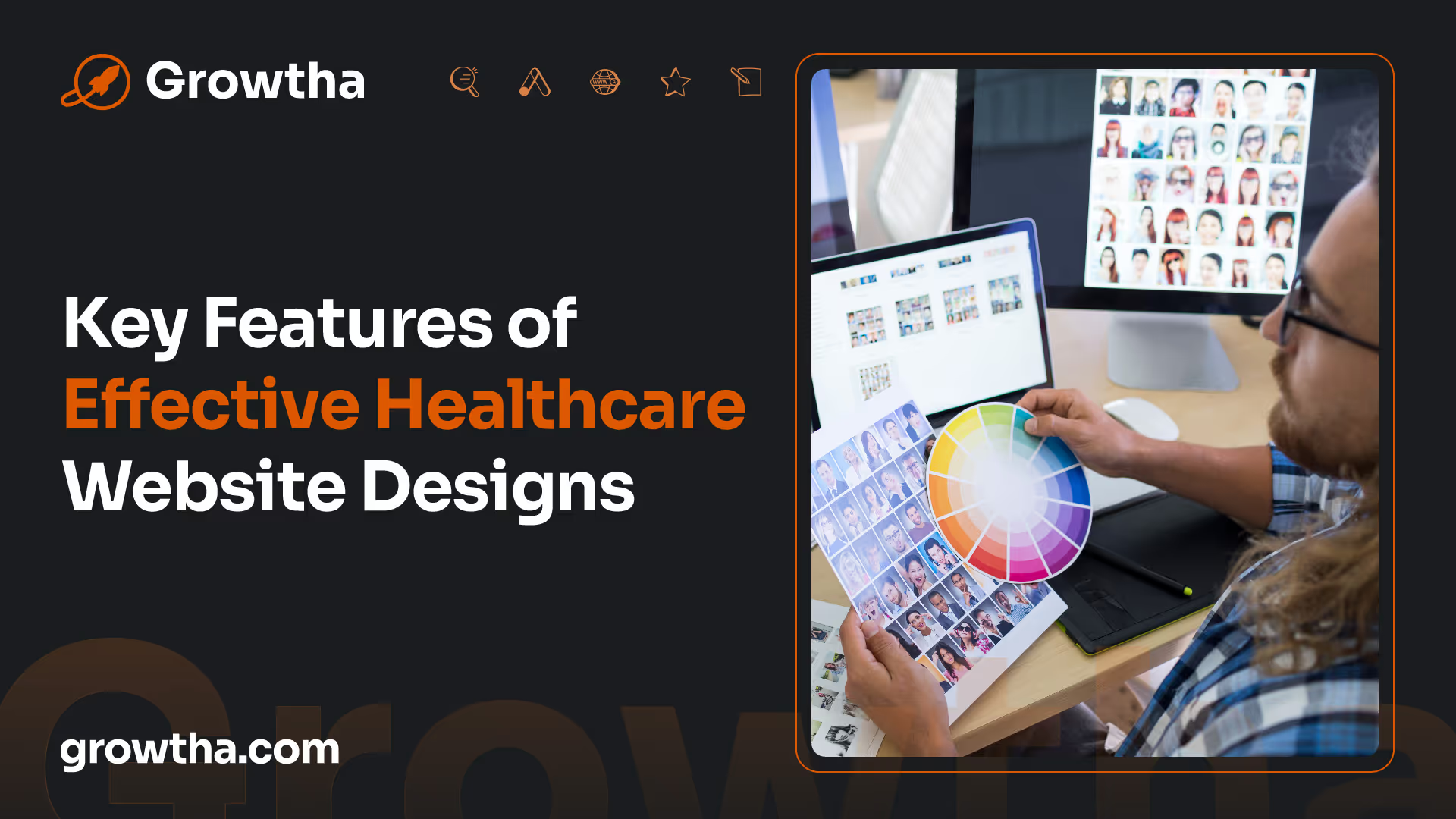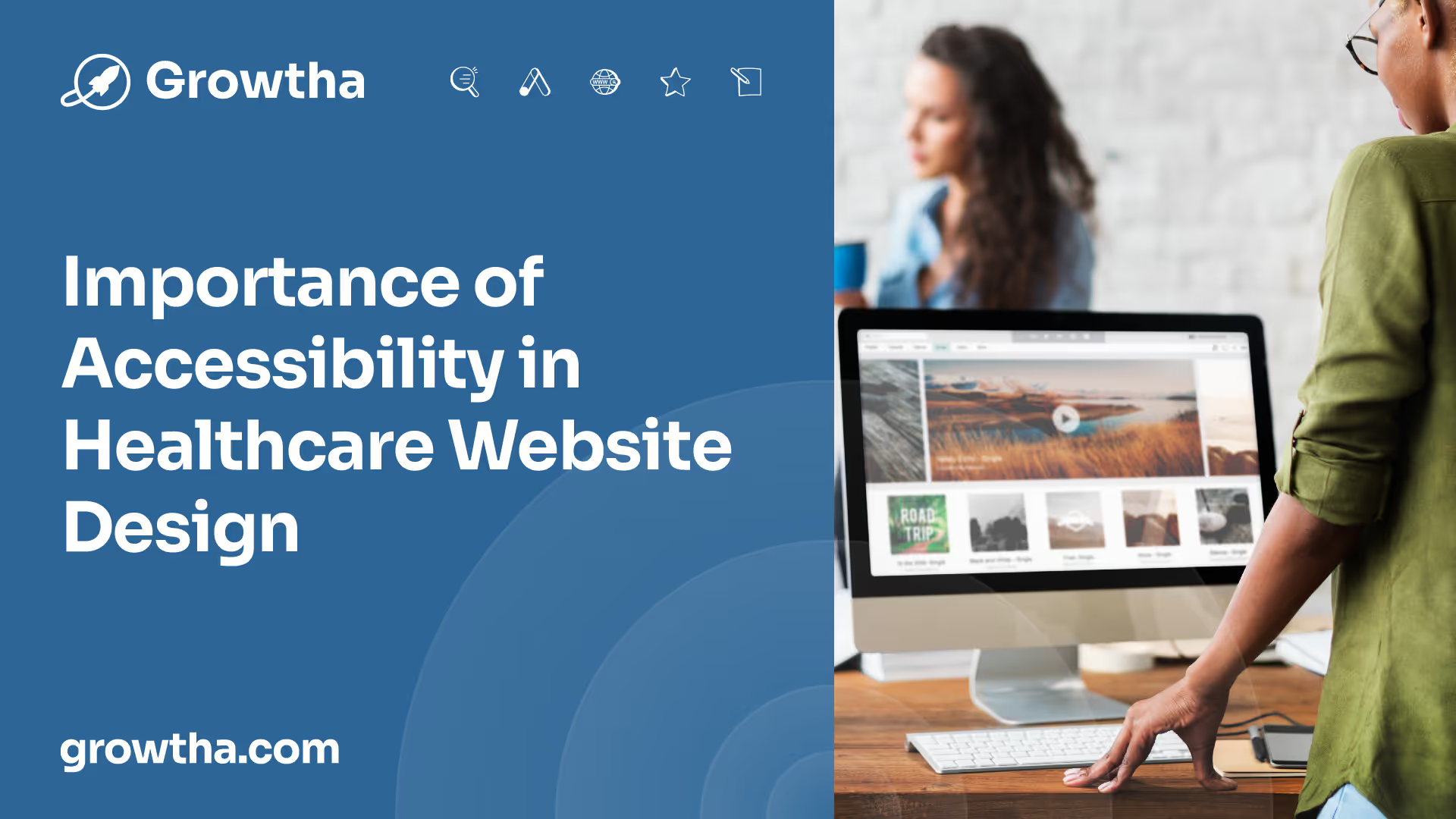5 Examples of Great Healthcare Website Designs
When it comes to healthcare website designs, there are several standout examples that excel in terms of usability, visual appeal, and functionality.


5 Examples of Great Healthcare Website Designs
Great Examples of Healthcare Website Designs
When it comes to healthcare website designs, there are several standout examples that excel in terms of usability, visual appeal, and functionality. Here are five great examples of healthcare websites:
Mayo Clinic Website
The Mayo Clinic website sets a high standard for healthcare website design. It offers a clean and organized layout, making it easy for users to navigate and find information efficiently. The effective use of white space contributes to a visually appealing interface that enhances the overall user experience.
Cleveland Clinic Website
The Cleveland Clinic's website showcases a responsive design that ensures a seamless user experience across different devices and screen sizes. This adaptability caters to a wide range of users accessing the site from various platforms, enhancing accessibility and convenience.
WebMD Website
WebMD's website stands out with its engaging visuals and interactive tools. These elements help users understand complex medical information in a more digestible format. By incorporating engaging visuals and interactive features, WebMD enhances user engagement and encourages active participation on the site.
Children's Hospital of Philadelphia Website
The Children's Hospital of Philadelphia website features a user-friendly interface with clear navigation and intuitive design elements. This simplicity enables visitors to quickly locate the information they need, especially in urgent situations. The website's design prioritizes user convenience and accessibility.
Johns Hopkins Medicine Website
The Johns Hopkins Medicine website integrates high-quality multimedia content, such as videos and interactive graphics, to educate and inform users about various health topics. This multimedia approach enhances the visual appeal and educational value of the website, making it a valuable resource for users seeking comprehensive health information.
These examples demonstrate the importance of effective healthcare website design in providing a positive user experience, facilitating access to information, and engaging users in their healthcare journey. By incorporating user-friendly interfaces, responsive designs, engaging visuals, and multimedia elements, these websites set the bar high for others in the healthcare industry.

Key Features of Effective Healthcare Website Designs
When it comes to healthcare website designs, there are several key features that contribute to their effectiveness in providing a seamless user experience. Let's explore these features in detail:
User-Friendly Navigation
User-friendly navigation is essential for healthcare websites. Visitors should be able to easily find the information they are looking for without feeling overwhelmed or confused. Implementing a clear and intuitive navigation menu, along with well-organized content categories, helps users navigate the site effortlessly. By prioritizing usability, healthcare websites can ensure that visitors can access the information they need quickly and efficiently [1].
Responsive Design for Mobile Devices
With the increasing prevalence of mobile devices, it is crucial for healthcare websites to have responsive designs. Mayo Clinic's website, for example, incorporates a responsive design that ensures seamless user experience across different devices and screen sizes [2]. This adaptability caters to a wide range of users accessing the site from various platforms. By optimizing the website for mobile devices, healthcare institutions can enhance accessibility and engage a larger audience.
Engaging Visuals and Multimedia Elements
Incorporating high-quality images and multimedia elements can enhance the aesthetic appeal of healthcare websites, making them engaging and visually appealing to users. Visuals such as photographs, infographics, and videos can effectively convey information and create an immersive experience for visitors. These elements can also help healthcare websites communicate their brand identity, establish credibility, and improve user engagement.
Clear Call-to-Action Buttons
Clear and prominent call-to-action (CTA) buttons are important for guiding users to take desired actions on healthcare websites. Whether it's scheduling an appointment, contacting the healthcare provider, or accessing specific services, strategically placed CTAs can significantly improve user experience and conversion rates. By using contrasting colors, concise text, and intuitive placement, healthcare websites can effectively direct visitors toward their intended actions.
Security and Data Protection
Healthcare websites handle sensitive patient information, so security and data protection should be top priorities. Implementing encryption protocols and following industry standards, such as HIPAA compliance, can help protect patient privacy and maintain trust in the healthcare institution. By prioritizing security measures, healthcare websites can instill confidence in their users and ensure the confidentiality of personal data.
By incorporating these key features into their designs, healthcare websites can create a user-friendly and engaging online presence. From intuitive navigation to responsive layouts, these features contribute to an optimal user experience, fostering trust, accessibility, and effective communication between healthcare providers and patients.

Importance of Accessibility in Healthcare Website Design
Ensuring accessibility in healthcare website design is of utmost importance as it allows individuals with disabilities to access and navigate these websites effectively. By incorporating accessibility features, healthcare organizations can provide equal access to information and services for all users. Let's explore the significance of accessibility in healthcare website design, including ADA compliance, accommodating people with disabilities, and the Web Accessibility Initiative.
ADA Compliance and Lawsuits
All Federal Government websites are required to be accessible to people with disabilities, following the standards of Section 508 compliance derived from the Rehabilitation Act. This compliance ensures that websites are designed to accommodate everyone, including individuals with disabilities. Failure to meet accessibility standards can lead to legal consequences, as more than 3,000 digital accessibility lawsuits were brought in 2020, a 23% increase from the previous year [5]. Healthcare practices and organizations may face lawsuits alleging that their websites have access barriers that violate the Americans with Disabilities Act (ADA) and various state laws.
Accommodating People with Disabilities
By prioritizing accessibility in healthcare website design, organizations can ensure that individuals with disabilities can fully engage with the content and functionality of their websites. This includes making provisions for individuals with visual impairments, hearing impairments, mobility impairments, and cognitive disabilities. Implementing features such as alt text for images, closed captioning for videos, keyboard navigation, and clear readability options can significantly enhance the user experience for individuals with disabilities.
Web Accessibility Initiative
The Web Accessibility Initiative (WAI) provides comprehensive guidelines and resources to promote web accessibility for people with disabilities. It offers detailed information on best practices, techniques, and strategies for creating accessible websites. Healthcare organizations can refer to the WAI guidelines to ensure that their websites meet the necessary accessibility standards. By adhering to these guidelines, healthcare websites can be more inclusive and user-friendly for individuals with disabilities, providing them with equal access to vital healthcare information and services.
Prioritizing accessibility in healthcare website design not only helps organizations comply with legal requirements but also fosters inclusivity and improves the overall user experience for individuals with disabilities. By accommodating the diverse needs of all users, healthcare websites can effectively deliver valuable information, enhance patient engagement, and ultimately provide equal access to healthcare resources for everyone.
User Experience (UX) Design in Healthcare Websites
User experience (UX) design plays a crucial role in creating successful healthcare websites. It involves organizing and presenting information in a user-friendly manner, building trust and credibility, ensuring mobile responsiveness, and integrating engaging visuals and multimedia elements.
Organizing and Presenting Information
Healthcare websites often have a wealth of information that needs to be presented in a clear and organized manner. UX design helps achieve this by employing intuitive navigation, clear labeling, and logical information architecture [6].
By ensuring that relevant information is easily accessible and well-structured, healthcare websites enhance overall usability. This includes having well-defined sections, easy-to-use menus, and a search functionality that allows users to find the information they need quickly and efficiently.
Building Trust and Credibility
Trust and credibility are vital in the healthcare industry. A well-designed UX instills trust by providing a professional interface, consistent branding, attention to detail, and adherence to industry standards [6].
Through thoughtful UX design, healthcare websites can create a sense of reliability and professionalism. This includes using high-quality images, clear and concise content, and ensuring that the website reflects the values and mission of the healthcare organization.
Mobile Responsiveness
With the increasing use of mobile devices, it is crucial for healthcare websites to be mobile responsive. Mobile responsiveness ensures a consistent and enjoyable user experience across devices, allowing patients to access healthcare information on the go [6].
By optimizing the website for different screen sizes and devices, healthcare websites can reach a wider audience and provide seamless access to information and services. This includes responsive layouts, easy-to-tap buttons, and streamlined navigation for mobile users.
Visuals and Multimedia Integration
Healthcare websites often need to communicate complex medical information to patients. UX design can effectively achieve this through the integration of engaging visuals and multimedia elements. These elements enhance user engagement, understanding, and overall user experience.
By incorporating infographics, videos, animations, and interactive features, healthcare websites can simplify complex concepts and make them more accessible to users. Visuals and multimedia elements also contribute to a visually appealing and engaging website design, capturing the attention of users and increasing their interaction with the content.
In conclusion, user experience (UX) design is a crucial aspect of healthcare websites. By organizing and presenting information effectively, building trust and credibility, ensuring mobile responsiveness, and integrating engaging visuals and multimedia elements, healthcare websites can provide a seamless user experience and effectively communicate important healthcare information to patients.
Effective Communication in Healthcare Website Design
When it comes to healthcare website design, effective communication is key to ensuring that visitors can easily access the information they need. Here are some important aspects of effective communication in healthcare website design:
Informative Content and Layout
Healthcare websites should prioritize informative content and a well-organized layout. Providing accurate and relevant information to visitors not only helps them find the information they are looking for but also builds trust and credibility for the healthcare institution. The content should be presented in a clear and concise manner, making it easy for users to understand and navigate.
Interactive Features for Patient Engagement
To engage patients and enhance their experience, healthcare websites should incorporate interactive features. These can include tools such as symptom checkers, appointment scheduling systems, and patient portals. By providing interactive features, healthcare websites empower patients to take an active role in their healthcare journey and facilitate seamless communication between patients and healthcare providers.
Prominent Calls-to-Action
Calls-to-action play a vital role in guiding visitors to take desired actions on a healthcare website. Prominently placed buttons or links that encourage users to schedule appointments, request information, or access resources can help streamline the user journey and improve conversion rates. Clear and concise language should be used to communicate the intended action and its benefits.
Mobile Responsiveness
Mobile responsiveness is essential for healthcare websites, as an increasing number of users access websites via mobile devices. Ensuring that the website is optimized for mobile platforms improves accessibility and user engagement. Mobile-responsive design allows the content to adapt to different screen sizes and orientations, providing a seamless browsing experience for users on smartphones and tablets. This is especially important as patients may need to access healthcare information on the go.
By focusing on informative content and layout, incorporating interactive features, utilizing prominent calls-to-action, and ensuring mobile responsiveness, healthcare websites can effectively communicate with their audience. Prioritizing effective communication enhances the user experience and enables patients to access the information they need, fostering a positive and engaging online healthcare journey.
Privacy and Security in Healthcare Website Design
When it comes to healthcare website design, privacy and security are of utmost importance. Healthcare institutions must prioritize the protection of patient data and ensure compliance with regulations such as the Health Insurance Portability and Accountability Act (HIPAA). Here are key aspects to consider in terms of privacy and security in healthcare website design.
Secure Data Transmission and Encryption
To safeguard sensitive patient information, healthcare websites should implement secure data transmission protocols. This involves using secure socket layer (SSL) certificates and transport layer security (TLS) encryption to protect data as it is transmitted between the user's browser and the website server. By encrypting data, healthcare websites can mitigate the risk of unauthorized access or interception of patient information.
HIPAA Compliance
Compliance with HIPAA regulations is crucial for healthcare websites. HIPAA sets standards for the privacy and security of protected health information (PHI). Websites that handle PHI must adhere to HIPAA guidelines to ensure the confidentiality and integrity of patient data. This includes implementing strict access controls, conducting regular security risk assessments, and establishing protocols for breach notification and response.
Patient Data Confidentiality
Maintaining patient data confidentiality is a fundamental aspect of healthcare website design. Websites should have robust security measures in place to prevent unauthorized access to patient records. This includes implementing strict user authentication protocols, role-based access controls, and secure storage of patient data. By prioritizing patient data confidentiality, healthcare websites can instill trust and confidence in their users.
Cybersecurity Measures
In today's digital landscape, healthcare websites face numerous cybersecurity threats. It is essential for healthcare institutions to implement robust cybersecurity measures to protect against data breaches and malicious attacks. This includes regularly updating security software, conducting vulnerability assessments, and implementing intrusion detection systems. By staying vigilant and proactive in addressing cybersecurity risks, healthcare websites can safeguard patient data and maintain the integrity of their systems.
By incorporating these privacy and security considerations into healthcare website design, organizations can ensure the protection of patient information and maintain the trust and confidence of their users. Keeping up with industry standards and regulations is vital to providing a secure and reliable online environment for patients and healthcare professionals alike.
References
[1]: https://www.enginess.io/insights/7-key-features-healthcare-websites-2017
[2]: https://redblink.com/visually-appealing-interface-importance/
[6]: https://medium.com/@rahul100111/the-role-of-user-experience-ux-design-in-healthcare-websites-tips-and-tricks-for-optimization-602403cb473f







